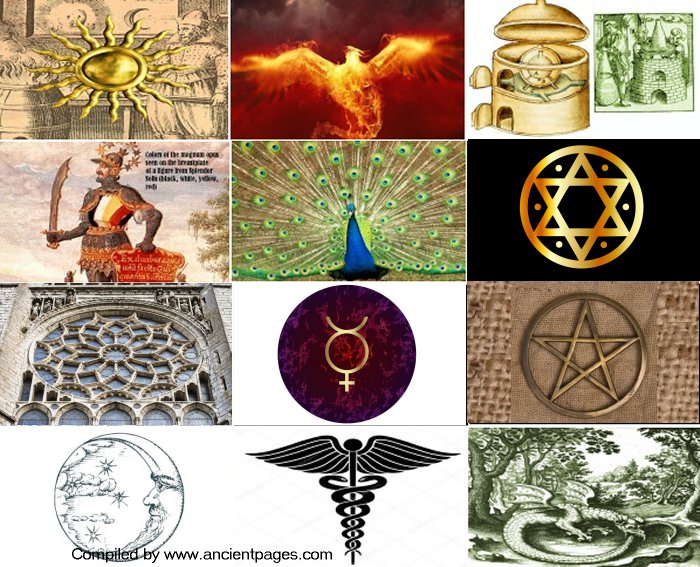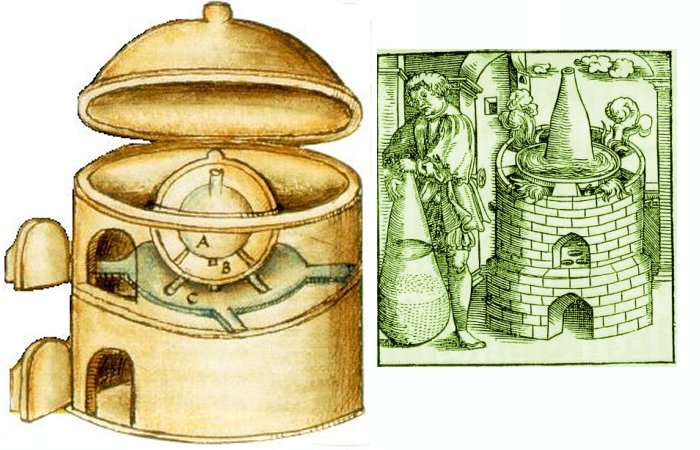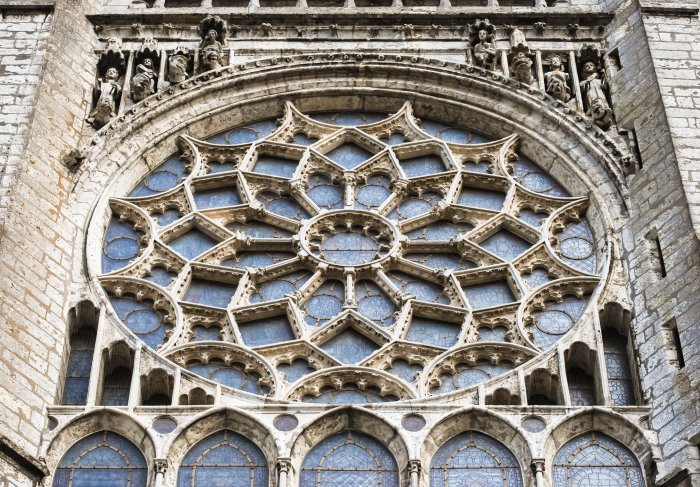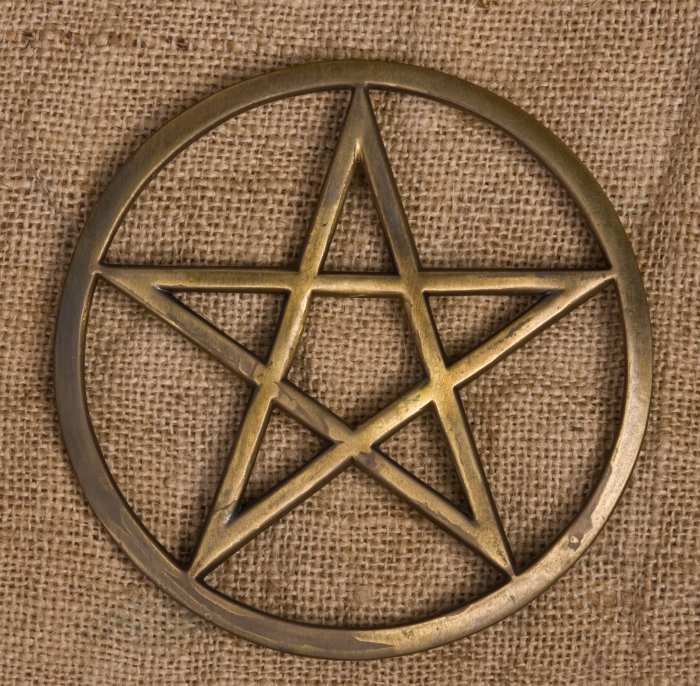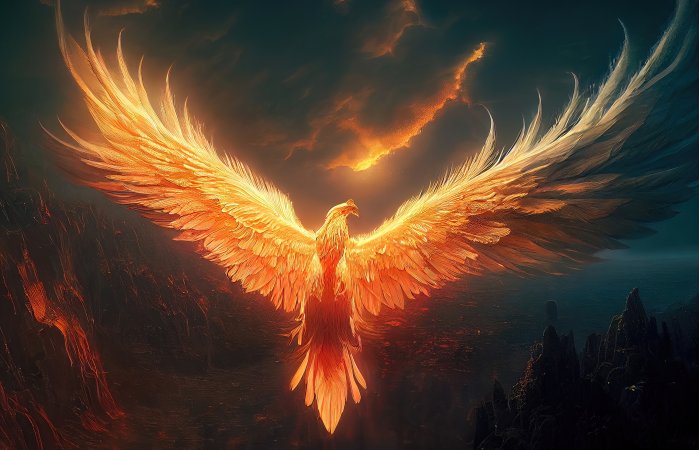12 Alchemy Symbols Explained
A. Sutherland - AncientPages.com - Alchemy was a richly symbolic medieval science (forerunner of chemistry) that combined practical discoveries of alchemists with a mystical view of nature.
The goal of alchemists (significantly influenced by alchemic practices in Mesopotamia and ancient Egypt) was to create gold or silver from basic metals.
However, during Medieval times, the alchemists were often persecuted. Therefore, they had to invent their own complex vocabulary of signs and symbols to conceal their ingredients, memorize their knowledge, and keep it secret.
1. Athanor
Credit: Public Domain
In alchemy, an athanor was a furnace used for diverse alchemical works related to obtaining a philosopher's stone and other metallurgical processes. It was in the form of a tower with a hearth in the lower part, providing to provide a uniform and constant heat, once filled with coal-burning during a longer time. The object (like many others in the alchemy of the old days) also symbolized the flame of feelings and great love.
2. Ouroboros
Engraving of a wyvern-type ouroboros by Lucas Jennis, in the 1625 alchemical tract De Lapide Philosophico. The figure serves as a symbol for Mercury. source
In alchemy, the Ouroboros (Uroboros) undoubtedly represents infinity. Swallowing its own tail and feeding on its own body, the creature represents the cycle of life. It represents the concept of 'one in all' and eternal death, rebirth, and regeneration.
Frequently used in alchemical depictions, it symbolizes the circular nature of the alchemist's opus. It is a symbol of transforming matter, i.e. alchemy itself.
Read also:
Ouroboros: Ancient Infinity Symbol Used By Different Ancient Civilizations
Ouroboros – Cosmic Serpent And The Self-Devourer – Universal, Powerful Symbol Of Great Antiquity
3. The Caduceus
Credit: Adobe Stock - vtribalium81
On an alchemical level, this symbol means that Mercury, a messenger of the gods, casts his magic wand between two warring serpents. They coiled themselves around the wand and formed the caduceus, a symbol of opposing forces continuously held in balance. The two serpents represent duality and polarity. In the alchemist’s laboratory, the Caduceus means the amalgamation of sulfur (male) and quicksilver (female), which signifies the unity of the polar opposites.
The design itself has three parts: the central rod symbolizes alchemical powers and it signifies the connection between the spiritual and earthly world. The wings symbolize the awareness of the divine and travel into the cosmic world.
4. The Moon
Credit: Adobe Stock - vladayoung
The alchemist thought to combine the Moon (the silver) with the sun to achieve balance.
In "The Encyclopedia of Magic and Alchemy", Rosemary Guiley writes: “In alchemy, the Moon represents feminine forces and the feminine principle of the cosmos. According to Emerald Tablet, it is the archetypal Mother and is the supreme force known as One Thing. It rules the Below, while the archetypal Father, the Sun, rules the Above.
The Moon is mutable and volatile, a force that enables transformation to take place.
The creation of the Philosopher’s Stone is achieved by the marriage of the Mother and One Thing with the archetypal Father, the Sun, which is the One Mind.
In alchemical art: “the marriage is often represented by the physical union of the king (Sol) and the queen (Luna). Their offspring, a Hermaphrodite, represents the Prima Materia – the beginnings of the Philosopher’s Stone…”
The element associated with the Moon is water, and the alchemical process is dissolution. The Moon dissolves every month, and dissolution dissolves ideas, emotions, thoughts, and diverse attachments, creating empty space for new things to come into being.
5. Seal Of Solomon
This six-pointed star (Seal of Solomon) combines the alchemical signs for water and fire. Air and earth are created as the water descends and the fire ascends. The symbol symbolizes the merger of the four elements in the alchemist’s greatest quest – the Philosopher's Stone, a fabled alchemical substance capable of turning base metals such as mercury into gold or silver.
6. Rose Windows
Credit: Adobe Stock - romas_ph
The Rose Windows symbolized the fifth element of spiritual fulfillment for the alchemists, who viewed it as the connection to the divine. They were designed by master craftsman Chartres using a secret method of antimony. It was believed that looking at these windows could alter one's perception.
Gothic circular windows in the shape of a rose are commonly seen as stained glass in the largest cathedrals. Alchemists, on the other hand, saw the dodecahedron as a symbol that is connected to the ether (or enlightened fifth element) that all alchemists were trying to achieve). Looking at the windows was thought to have a transformational effect on the viewer that carried them into an altered state of perception.
7. Mercury
Credit: Adobe Stock - radionastya
It is an important substance that permits all matter according to alchemy principles. Along with Sulphur and salt, it is one of the three heavenly substances. The metal mercury (or quicksilver) is involved in every stage of the Great Work related to the creation of the Philosopher’s Stone, and the alchemists believed they could extract mercury from any metal, which was important in experiments leading to the transmutation of basic metals into gold and silver. The mercury’s fluidity symbolizes the transition from base metal into gold; it also has symbolic meaning for the union between the material and the spiritual. It has been suggested the undeciphered Ripley Scroll depicts the creation of the Philosopher Stone.
8. Pentacle
Credit: Adobe Stock - CreativeFire
In alchemy, it was a sign of health, mystic powers, and harmony. Since the pentagram (pentagram) can represent earth, heaven, the human body, and the mind, alchemists considered it very powerful in nature and used it as a protection symbol. They also tried to include this ancient symbol in special books to stress that these books contained sacred knowledge and even decorated the covers of the books with this symbol as well.
9. Peacock’s Tail
Credit: Pixabay - Jaro_N
According to the alchemist, the Peacock's Tail symbolizes the accomplishment of his goal, just like the peacock demonstrates its tail with a wonderful variety of colors.
With the Peacock stage, the alchemist has entered the astral world's inner experience, which initially appears as ever-shifting patterns of color.
According to Antoine-Joseph Pernety, also known as Dom Pernety (1716 1796), a Benedictine and librarian of Frederic the Great of Prussia and writer:
"These are the colors of the rainbow which manifest themselves on the matter during the operations of the stone." He doesn't seem to place that much importance on it, but he does place the peacock's tail after the raven (Blackness, first stage) and before the swan (Whiteness, second stage). The phoenix represents the third stage of Redness.
The image of the peacock's tail, with its iridescence of a multitude of colors, might have found its origin in the spiritual experience of alchemists. I primarily speak of meditation experiences in this article, but some of the alchemists probably also experienced the energies of the astral world, which is often characterized by its brilliant colors, and some clairvoyants have said that the clothing of some astral beings is iridescent…”
10. Phoenix
Credit: Adobe Stock - Terablete
In alchemy, the phoenix symbolizes the Philosopher’s Stone, the consummation of the Great Work. It symbolizes (rebirth) regeneration through fire and is highly regarded as a symbol of regeneration, associated with the sulfuric process of cleansing and transformation into the fire. It's important as a representation of the alchemic process of death and rebirth of the elements. Legend says the phoenix lives in Arabia but flies to Egypt, the home of alchemy, to undergo its ritual death and regeneration.
Further, it also completes the process of soul development. In an alchemist’s laboratory, this symbol means red sulfur, announcing the end of the Great Work at the fourth stage called Rubedo (or Redness). In this association with the sulfuric process, the cleansing and transformation into fire takes place.
11. Magnum Opus
In alchemy, the Magnum Opus symbolizes an alchemist’s great effort in the process of forming the legendary substance, which generates astounding powers that transform base metals into gold and silver.
The Magnum Opus originally had four stages: nigredo, a blackening; albedo, a whitening; citrinitas, a yellowing; and rubedo, a reddening. These stages symbolized the Great Work—the process of creating the Philosopher’s Stone. The Magnum Opus is associated with a variety of alchemical symbols.
12. Gold
Since gold, either physical or spiritual, was the goal of alchemy it was equal to the philosopher's stone.
Among the alchemists—busy with the transmutation of gold from base metals such as copper and lead—gold was highly valued for its unique physical and chemical properties. It symbolized enlightenment and the great attempt to turn base metal into gold—the ‘king of metals.’ In alchemy, gold was believed to possess the secrets of immortality, making it a precious element.
Updated on March 10, 2024
Written by A. Sutherland - AncientPages.com Senior Staff Writer
Copyright © AncientPages.com All rights reserved. This material may not be published, broadcast, rewritten or redistributed in whole or part without the express written permission of AncientPages.com
Expand for referencesRattansi P. Antonio Clericuzio A. Alchemy and Chemistry in the 16th and 17th Centuries
Guiley R. The Encyclopedia of Magic and Alchemy
Encyclopedia of Magic
More From Ancient Pages
-
 York’s Thriving Medieval Jewish Community – New Study
Archaeology | Aug 22, 2023
York’s Thriving Medieval Jewish Community – New Study
Archaeology | Aug 22, 2023 -
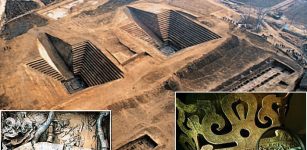 Mysterious Lost Civilization Of Chu And Its Powerful Kingdom
Civilizations | Nov 29, 2018
Mysterious Lost Civilization Of Chu And Its Powerful Kingdom
Civilizations | Nov 29, 2018 -
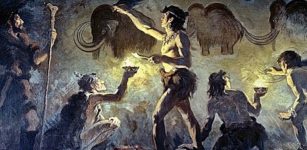 Cro-Magnon Man Invented First Indoor Lighting – An Unusual But Effective Oil Lamp
Ancient History Facts | Jan 22, 2019
Cro-Magnon Man Invented First Indoor Lighting – An Unusual But Effective Oil Lamp
Ancient History Facts | Jan 22, 2019 -
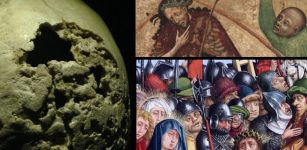 Manuscripts And Art Support Evidence That Syphilis Was In Europe Long Before Explorers Could Have Brought It Home
Featured Stories | Jul 15, 2022
Manuscripts And Art Support Evidence That Syphilis Was In Europe Long Before Explorers Could Have Brought It Home
Featured Stories | Jul 15, 2022 -
 Mystery Of The Ancient Reptilian Gods Remains A Complex Subject – Memories Of The Past – Part 1
Ancient Mysteries | Feb 6, 2022
Mystery Of The Ancient Reptilian Gods Remains A Complex Subject – Memories Of The Past – Part 1
Ancient Mysteries | Feb 6, 2022 -
 Ancient Byblos: Powerful Phoenician City With Own Kings
Civilizations | Apr 23, 2016
Ancient Byblos: Powerful Phoenician City With Own Kings
Civilizations | Apr 23, 2016 -
 3,000-Year-Old Twisted Gold Torc Discovered In Essex
Archaeology | Jul 15, 2023
3,000-Year-Old Twisted Gold Torc Discovered In Essex
Archaeology | Jul 15, 2023 -
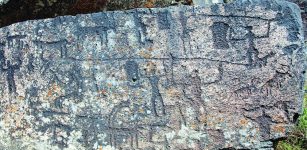 15 Prehistoric Rock Paintings Discovered Near Ancient Armenian City Of Ani
Archaeology | Dec 14, 2015
15 Prehistoric Rock Paintings Discovered Near Ancient Armenian City Of Ani
Archaeology | Dec 14, 2015 -
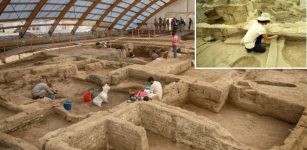 Unique And Unusually Large 8000-Year-Old Building Discovered At Çatalhöyük Site, Turkey
Archaeology | Sep 26, 2022
Unique And Unusually Large 8000-Year-Old Building Discovered At Çatalhöyük Site, Turkey
Archaeology | Sep 26, 2022 -
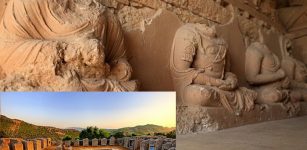 Takshashila: Renowned Learning Center That Attracted Buddhist Masters, Disciples And Students Of The World
Featured Stories | Sep 13, 2021
Takshashila: Renowned Learning Center That Attracted Buddhist Masters, Disciples And Students Of The World
Featured Stories | Sep 13, 2021 -
 Termessos: City Where History And Mythology Marked People’s Daily Lives
Featured Stories | Apr 4, 2025
Termessos: City Where History And Mythology Marked People’s Daily Lives
Featured Stories | Apr 4, 2025 -
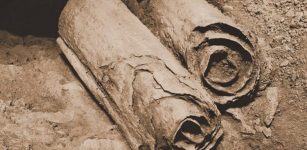 Qumran: The Dead Sea Scrolls And Their Connection To Enigmatic Essenes
Civilizations | Feb 20, 2016
Qumran: The Dead Sea Scrolls And Their Connection To Enigmatic Essenes
Civilizations | Feb 20, 2016 -
 Strange Ancient Artifact Found In New Jersey May Be Evidence Of A Long-Lost Advanced Civilization
Featured Stories | Jun 27, 2024
Strange Ancient Artifact Found In New Jersey May Be Evidence Of A Long-Lost Advanced Civilization
Featured Stories | Jun 27, 2024 -
 Does This Cathedral Offer Evidence Our Calendar Is ‘Missing’ 297 Years?
Featured Stories | May 6, 2022
Does This Cathedral Offer Evidence Our Calendar Is ‘Missing’ 297 Years?
Featured Stories | May 6, 2022 -
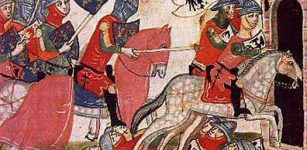 On This Day In History: The Battle Of Benevento Was Fought – On February 26, 1266
News | Feb 26, 2017
On This Day In History: The Battle Of Benevento Was Fought – On February 26, 1266
News | Feb 26, 2017 -
 Myth Of The Pale Sun Followed By A Catastrophe Confirmed By Archaeologists
Featured Stories | Sep 22, 2024
Myth Of The Pale Sun Followed By A Catastrophe Confirmed By Archaeologists
Featured Stories | Sep 22, 2024 -
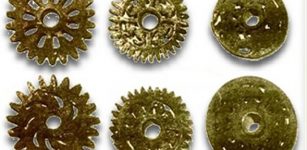 Controversial Prehistoric Bronze Gears Of Peru
Artifacts | Aug 15, 2015
Controversial Prehistoric Bronze Gears Of Peru
Artifacts | Aug 15, 2015 -
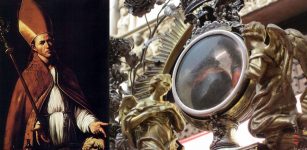 Blood Of St. Januarius – One Of The Most Remarkable Christian Relics
Artifacts | Jun 27, 2017
Blood Of St. Januarius – One Of The Most Remarkable Christian Relics
Artifacts | Jun 27, 2017 -
 Mysterious Marcahuasi, Peru – One Of The Greatest Puzzles Of Human Prehistory
Ancient Mysteries | Oct 2, 2015
Mysterious Marcahuasi, Peru – One Of The Greatest Puzzles Of Human Prehistory
Ancient Mysteries | Oct 2, 2015 -
 Australia’s Submerged Indigenous Sites – New Discoveries And Study
Archaeology | Aug 31, 2021
Australia’s Submerged Indigenous Sites – New Discoveries And Study
Archaeology | Aug 31, 2021

